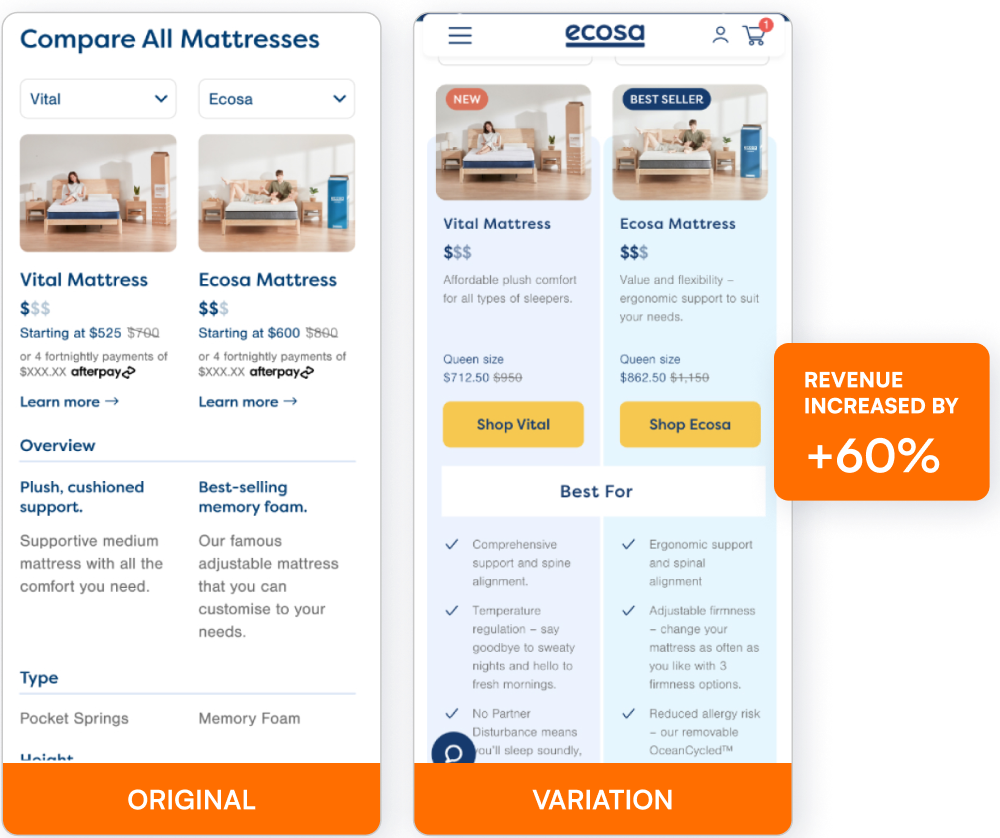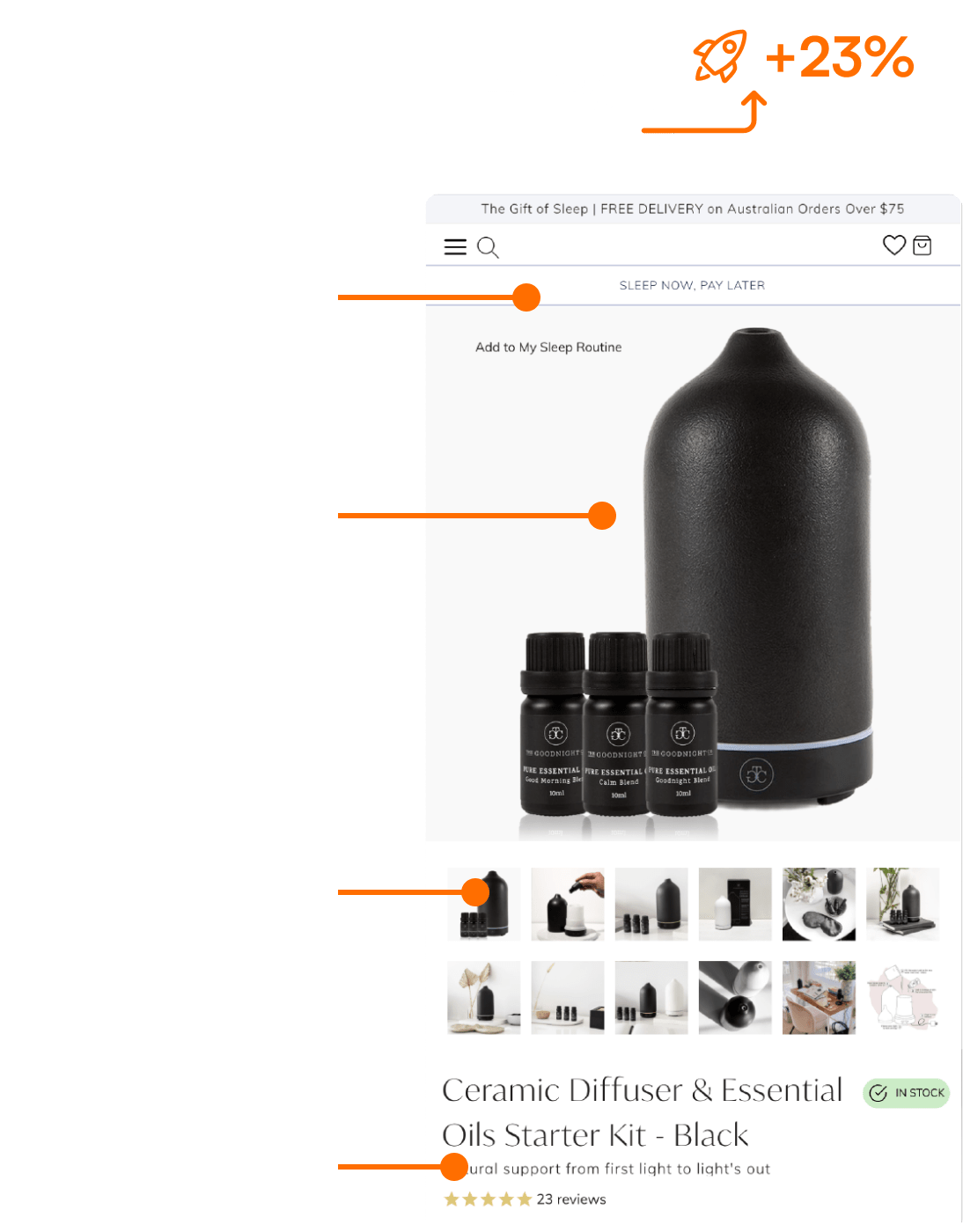Conversion Rate Optimisation (CRO) is the key to unlocking higher sales and greater customer satisfaction in the competitive world of e-commerce. However, even the most well-intentioned CRO strategies can only fall short if common pitfalls are noticed. Avoiding these mistakes is crucial to ensuring that your e-commerce site attracts visitors and converts them into loyal customers. In this blog, we’ll explore seven common CRO pitfalls and provide actionable insights on how to avoid them so you can achieve better e-commerce results.
1. Neglecting Mobile Optimisation

We can all agree that mobile shopping is on the rise, so neglecting mobile optimisation is a significant pitfall that can severely impact your e-commerce performance. With mobile devices accounting for more than half of all internet traffic, providing a seamless mobile experience is no longer optional—it's a necessity. If your e-commerce site isn’t optimised for mobile users, you risk losing a significant number of potential customers, which could directly affect your bottom line.
A poor mobile experience can lead to high bounce rates and abandoned carts. Slow load times, difficult navigation, and unresponsive design are common issues that drive mobile users away. To avoid this pitfall, implement a responsive design that adapts seamlessly to different screen sizes. Ensure your mobile site is fast, user-friendly, and provides a frictionless shopping experience.
Regular Conversion Optimisation Audits are essential to identifying and fixing mobile-specific issues. By partnering with a Conversion Rate Optimisation Sydney expert, you can ensure your mobile site is fully optimised to capture and convert mobile traffic, helping you tap into this growing segment of online shoppers.
2. Overlooking Data-Driven Decisions
One of the biggest mistakes in CRO is relying on intuition or assumptions rather than data. While gut feelings may sometimes lead to successful outcomes, they are far from reliable. Overlooking data-driven decisions can result in misguided optimisations that fail to improve conversion rates and may even harm them.
Data is the foundation of an effective CRO. Without it, you’re essentially flying blind. Tools like Google Analytics, heatmaps, and A/B testing provide valuable insights into user behaviour, empowering you to make informed decisions that drive conversions. For example, A/B testing can reveal which landing page version performs better, while heatmaps show where users are clicking and where they’re dropping off.
To avoid this pitfall, make data the cornerstone of your CRO strategy. Work with a Conversion Rate Optimisation Agency to implement a data-driven approach. Regularly review and adjust your tactics based on actual performance metrics, ensuring that your optimisations are grounded in evidence rather than guesswork.
3. Ignoring the Customer Journey
Focusing solely on individual pages without considering the entire customer journey is a common mistake that can lead to a disjointed user experience. CRO isn’t just about optimising isolated elements of your site; it’s about creating a seamless and satisfying experience from the moment a customer lands on your site to the point of purchase and beyond.
When you ignore the customer journey, you risk creating friction points, such as a complicated checkout process or lack of product information, that disrupt the flow of the shopping experience. For example, a well-optimised product page won’t convert if the checkout process is cumbersome or confusing. Similarly, a great homepage won’t lead to sales if the product pages don’t provide the information customers need to purchase.
To avoid this pitfall, map out the customer journey and optimise each touchpoint. A comprehensive Website Conversion Audit, conducted by a professional can help you identify gaps and friction points in the customer journey. By ensuring consistency in messaging, design, and functionality across all funnel stages, you can create a cohesive experience that leads to higher conversions, giving you confidence in your strategies.
4. Underestimating the Importance of Speed

Website speed is a critical factor in e-commerce success, yet CRO efforts often need to pay more attention to it. Slow load times can significantly deter potential customers, leading to higher bounce and lower conversion rates. Research shows that a one-second delay in page load time can result in a 7% reduction in conversions.
Customers expect fast and responsive websites. If your e-commerce site takes too long to load, visitors will likely abandon it in favour of a competitor’s site. This is particularly true for mobile users, who are even less patient regarding slow-loading pages. To avoid this pitfall, prioritise speed in your CRO strategy.
Optimising images, leveraging browser caching, and reducing server response times are all effective ways to improve site speed. Conducting a CRO Audit can help you pinpoint performance issues that may slow down your site. Tools like Google PageSpeed Insights can also provide actionable recommendations for speeding up your site and enhancing the overall user experience.
5. Failing to Test Changes
Implementing changes with proper testing is a safe approach that can lead to unintended consequences. While some changes seem like apparent improvements, they can sometimes backfire and reduce conversion rates. This is why testing is a fundamental component of any successful CRO strategy.
A/B and multivariate testing allow you to compare different versions of a webpage or element to determine which performs better. By testing changes before fully implementing them, you can avoid costly mistakes and ensure that your optimisations drive results. For example, testing different call-to-action buttons, headlines, or layouts can reveal the most effective options.
Make testing an integral part of your CRO process to avoid this pitfall. Work with a Conversion Agency specialising in designing and analysing tests to ensure accurate and actionable results. Continuously iterate and test to refine your optimisations and keep your conversion rates upward.
6. Neglecting Copy and Messaging
The quality and clarity of your copy are crucial to converting visitors into customers. However, many e-commerce businesses need to pay more attention to the importance of copy and messaging in their CRO efforts. Poorly written or unclear copy can confuse potential customers, erode trust, and ultimately result in lost sales.
Your copy should communicate the value of your products, address customer pain points, and guide visitors through the buying process. It’s not just about being persuasive; it’s about being clear and concise. Avoid jargon and focus on delivering a message that resonates with your target audience.
Craft high-quality copy that aligns with your brand and speaks directly to your customers’ needs. Conducting a Conversion Rate Optimisation Audit can help you assess the effectiveness of your current messaging and identify areas for improvement. Regularly update and refine your copy to stay relevant and competitive.
7. Focusing on the Wrong Metrics
In the world of CRO, not all metrics are created equal. Focusing on vanity metrics—such as page views or social media likes—can lead to misguided strategies that don’t improve conversion rates. The key to a successful CRO is identifying and focusing on the metrics that directly impact your bottom line.
Vanity metrics may make your site look successful on the surface, but they don’t necessarily translate to increased sales. Instead, focus on key performance indicators (KPIs) that measure real success, such as conversion rate, average order value, and customer lifetime value. These metrics provide a clearer picture of how your site is performing and where improvements are needed.
To avoid this pitfall, work with a Conversion Rate Optimisation Company to define and track the right KPIs for your business. Then, based on these metrics, regularly review and adjust your CRO strategy to ensure that your efforts are driving meaningful results.
Avoiding these common CRO pitfalls is essential for achieving better e-commerce results and growing your business. You can create a more effective and profitable online store by optimising for mobile, making data-driven decisions, considering the entire customer journey, prioritising speed, testing changes, focusing on copy, and tracking the right metrics.
If you're ready to take your e-commerce site to the next level, consider conducting a Free CRO Audit with Conversionry. Our team of experts in Conversion Rate Optimisation in Sydney and Brisbane can help you identify and address the specific challenges your site faces, ensuring that you avoid these pitfalls and achieve sustained e-commerce success.
Beat your competition to it!
Get the latest actionable conversion strategies delivered straight to your inbox!













